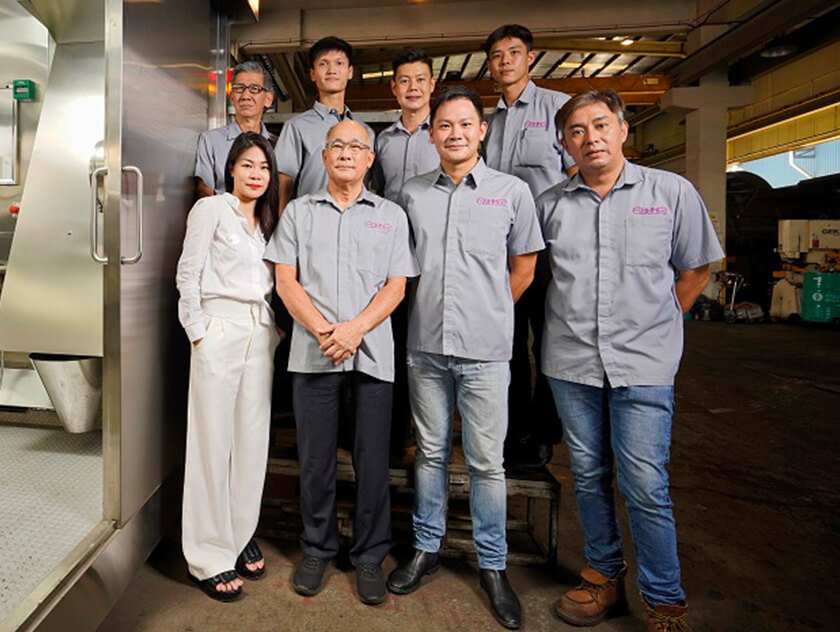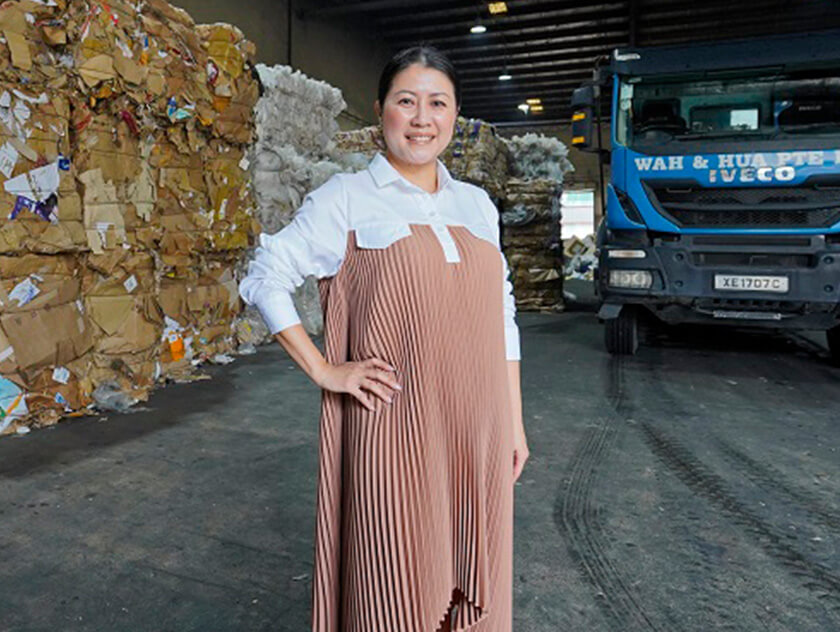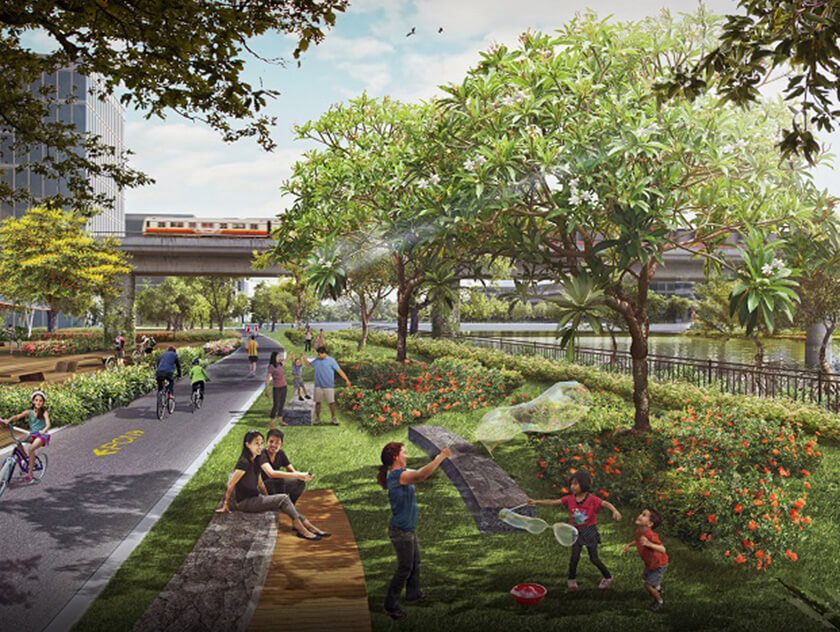Tell us more about the Zero Waste Master Plan and how industries can play a part.
The Zero Waste Master Plan sets out the strategy for Singapore to achieve our vision of becoming a zero waste nation. It is not just the government's effort. We need businesses and the public to join us in achieving this vision. To do this, we need to transition from a linear economy to a circular economy. In a circular economy, resources are reused many times in a loop and are kept in the ecosystem for as long as possible. One example is how we have closed the water loop with NEWater, by treating used water and giving it new life. Now we are going to close the waste loop.
There are three strategies for a Circular Economy under the Zero Waste Master Plan: sustainable production, sustainable consumption, and sustainable waste management and resource management. The first and the third are very relevant to industries. For sustainable production, we hope that industries can adopt sustainable product designs that are reparable and recyclable, and reduce packaging material. For sustainable waste management and resource management, we hope that the discarded material – I refrain from using the word “waste” because there are values in these discarded materials– as they can be converted into useful resources.
For example, the discarded material from our construction and demolition sites can be turned into recycled concrete aggregates that are reused in the construction industry. Discarded paper can be recycled and given a new lease of life. Discarded plastics can also be turned into pellets for industrial production processes. All these so-called discarded materials which we always term waste are very valuable resources.
How do you think the revitalised Sungei Kadut can contribute to the Zero Waste Master Plan?
Sungei Kadut, being the first eco-industrial district, can be the model for subsequent industrial estates. Come 2021, Sungei Kadut will have a multi-storey recycling facility called Kranji Green that will house recycling companies that process metals, plastics, paper and other types of discarded material into useful resources. It is located next to another building, TimMac, which houses companies in the timber, metal and machinery industries. This fosters the potential for industrial symbiosis.
An application of industrial symbiosis occurs when discarded material from TimMac and the surrounding Sungei Kadut district is sent to Kranji Green as feedstock, where they are recycled into new materials. Even plastic that is discarded from TimMac can be turned into pellets for export or for further manufacturing processes.
There are also several companies located in Sungei Kadut that are doing a lot of recycling. For example, Samwoh Corporation Pte Ltd is constructing a new headquarters that will be made entirely with recycled concrete aggregates. They also mix recycled scrap tyres into the asphalt mix for roads. Another company called LHT Holdings Limited specialises in turning wood waste into recycled wood pallets and furniture.
Hopefully, future industrial estates will have a similar concept as Sungei Kadut.
What is the significance of choosing to build a multi-storey recycling facility?
Land demand is a challenge in Singapore. Globally, recycling companies are usually land-based. But in Singapore, we need to cater to many industrial sectors for economic development. Therefore, we need to explore housing recycling companies in a multi-storey facility. Other than promoting industrial symbiosis, it will help to intensify land use in Singapore.
How have recycling companies reacted to Kranji Green?
Our talks with stakeholders have been encouraging and the Waste Management Recycling Association of Singapore (WMRAS) has been very supportive. We have worked closely with the industry through the partnership with WMRAS since 2014 to understand the requirements from the industry before putting the whole concept into the design stage. A number of waste management companies are getting their tenancies at Kranji Green.
Many companies are aware of the need to transform themselves from one that is manpower-intensive with low technology usage to one that is manpower-lean and tech-savvy. To help them with the transition, we have been advising them to automate their processes and be more efficient. We are working with Enterprise Singapore to see how we can support the companies in their transformation efforts.
These transformation efforts are not just about automation. More importantly, it's to create good jobs for Singaporeans and reduce our reliance on foreign workers in the waste industry. There is a perception of the waste industry as being low-valued and dirty. Using technology, we can improve working conditions, create high-value jobs like managing and maintaining robots, and attract young talents.
Is there anything you have seen in other countries that can be applied to Sungei Kadut and Singapore?
We want to increase the level of automation in our recycling processes. We can learn from best practices in countries like Hong Kong, where they automate the treatment of e-waste. They use robots and machines to dismantle TV panels and refrigerators, so that less manpower is needed.
In Singapore we adopt a commingled system, where all recyclables are disposed into one recycling bin. Traditionally, you need a labour-intensive set-up to sort them out. We are now encouraging the adoption of technologies that can automatically sort paper, metals, and even plastics into different types so that these valuable resources could be recycled into valuable secondary raw materials to support Singapore’s industrial activities. This is something we want to develop further in Singapore.


